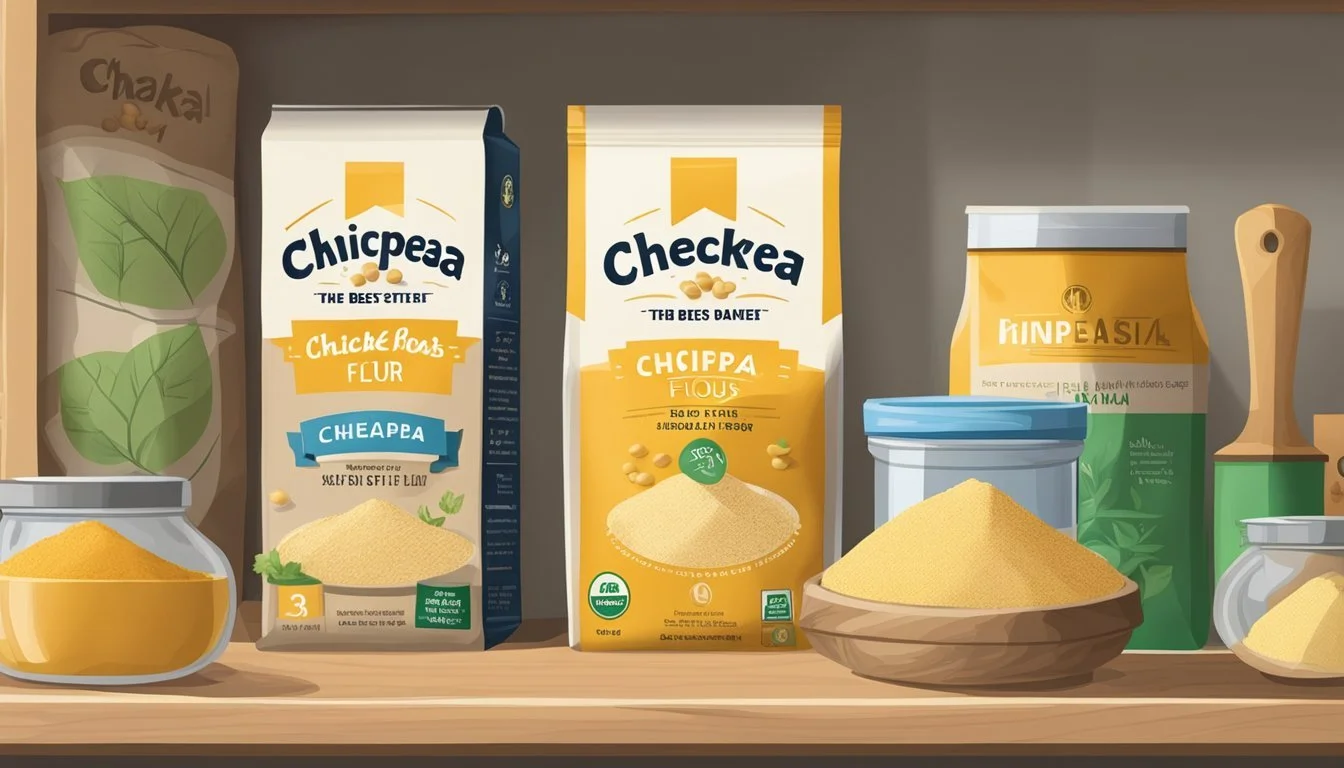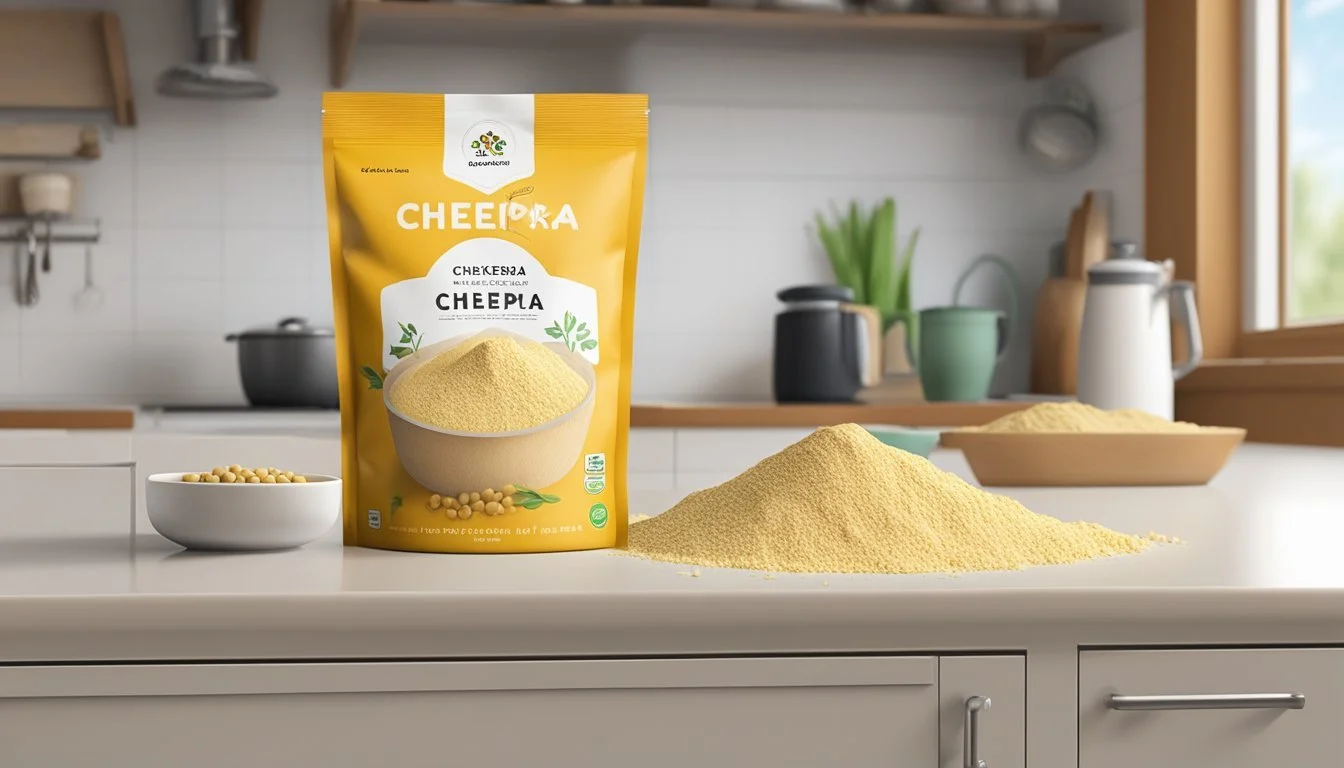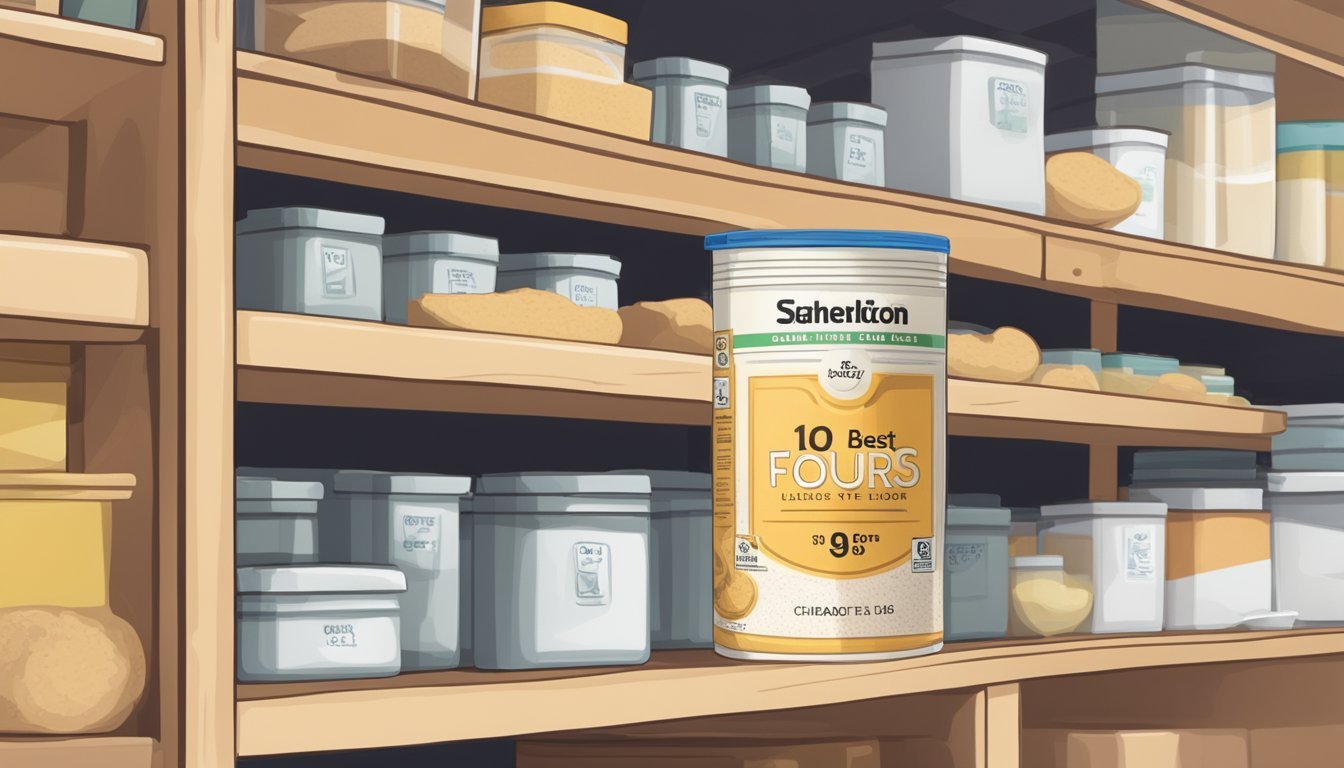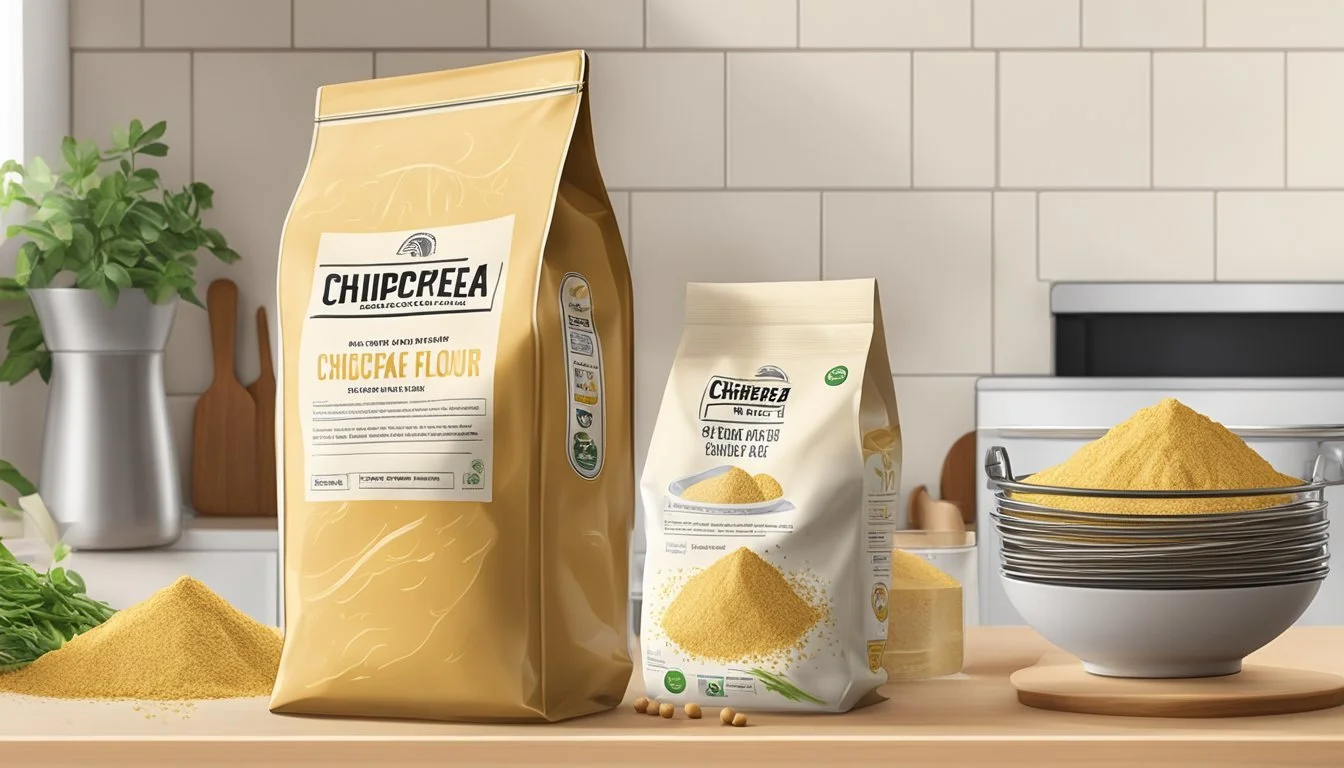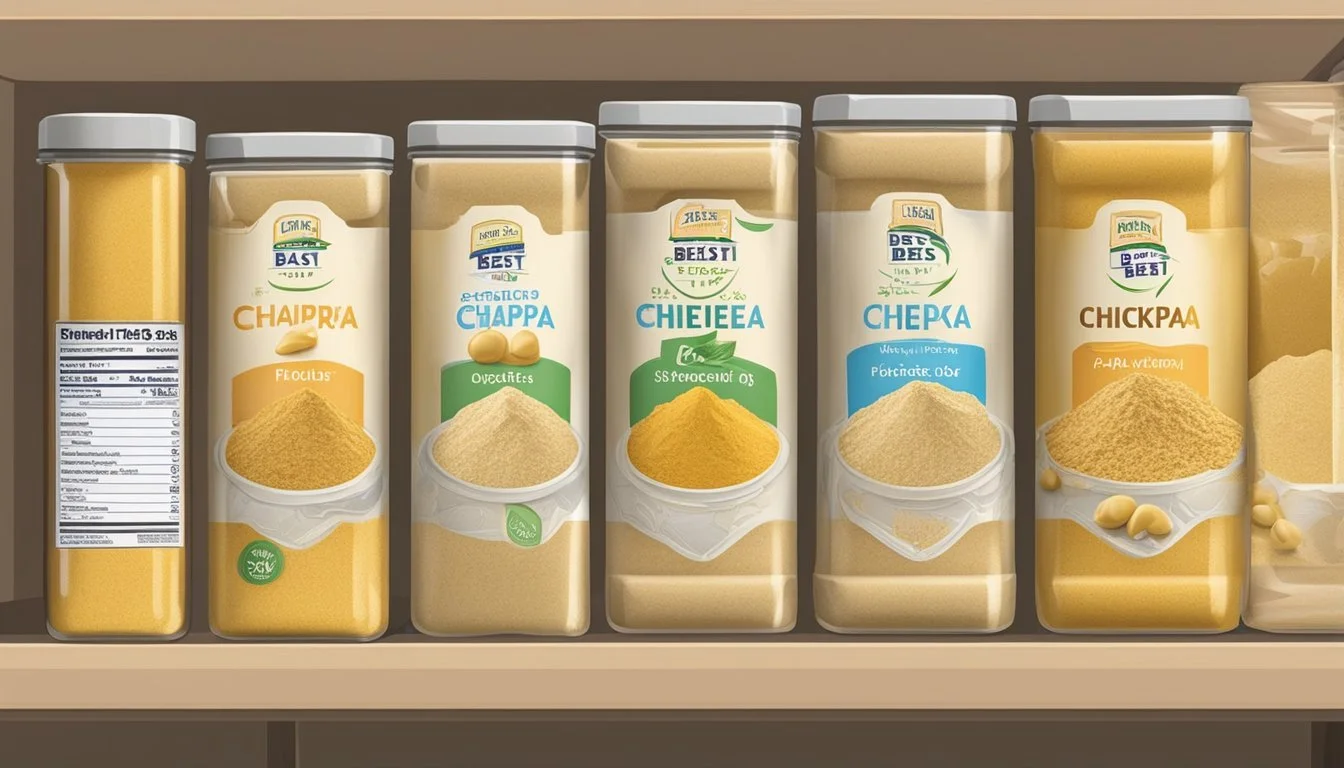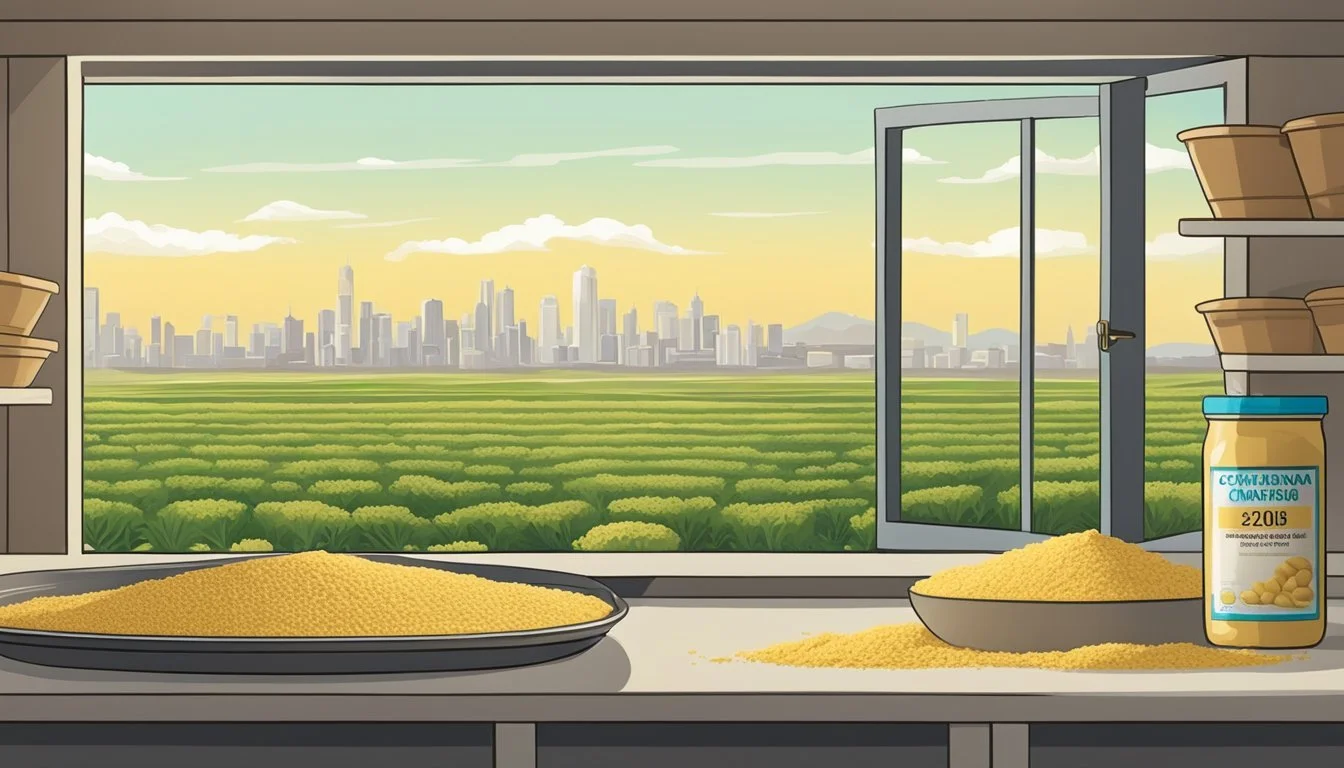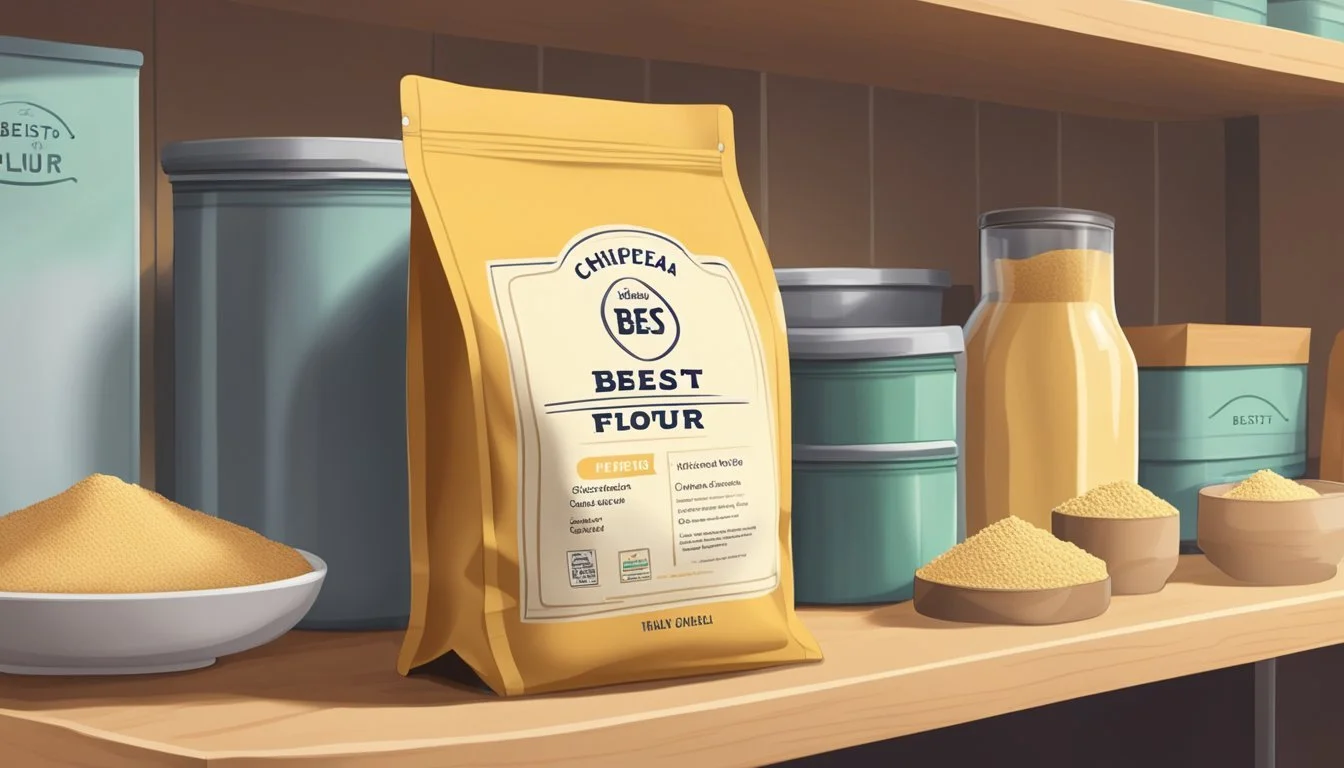How Long Does Chickpea Flour Last?
Shelf Life and Storage Tips
Chickpea flour, also known as gram flour or besan, is a staple ingredient in many culinary traditions, valued for its nutty flavor and versatility. This flour is made from ground chickpeas and serves as a key component in a variety of dishes, from Middle Eastern falafels to Indian pakoras. As with any flour, its shelf life is finite, and understanding how long it lasts can aid in maintaining its quality and ensuring food safety.
The longevity of chickpea flour is influenced by the conditions under which it is stored. When kept in a cool, dry place, it can remain usable for up to six to eight months. However, for those looking to extend its usability, refrigeration or freezing can effectively prolong its freshness. In the fridge or freezer, chickpea flour may stay good for one to two years, as colder temperatures slow down the degradation process.
The shelf life also depends on the packaging and exposure to oxygen. Chickpea flour that's been properly sealed and protected from moisture and pests can often last beyond the printed expiration date. But, as with all food products, it's crucial to inspect the flour for any signs of spoilage such as an off smell or discoloration before use.
Understanding Chickpea Flour
Chickpea flour, a staple in many culinary traditions, serves as a nutrient-dense and gluten-free alternative to traditional flours. It's also known as gram flour, besan, and garbanzo bean flour, widely used in various cuisines around the globe.
Definition and Origin
Chickpea flour is made by grounding dry chickpeas (garbanzo beans), a type of legume rich in protein and fiber. Originating from the Mediterranean and Middle Eastern regions, it has been adopted by many cultures for its versatility in cooking and baking. This gluten-free flour is an ideal option for those with gluten sensitivities or who follow a gluten-free diet.
Nutritional Profile
Nutrient Value per 100g Protein ~22g Fiber ~11g Carbohydrates ~58g Total Fat ~6.7g Calories ~387
Chickpea flour boasts a considerable nutritional value. It is loaded with protein and fiber, making it a filling addition to a variety of dishes. As a gluten-free alternative, chickpea flour allows those with celiac disease or gluten intolerance to enjoy a broader range of foods. Moreover, its high protein content makes it a favored choice in vegetarian and vegan diets.
Storage Fundamentals
The reader should be aware that proper storage is crucial for preserving the quality of chickpea flour. Key factors include maintaining ideal conditions, ensuring the right packaging, and understanding shelf life.
Ideal Conditions
Chickpea flour thrives in conditions that are cool and dry. Storage locations should maintain a stable temperature away from any sources of heat and out of direct sunlight. Common storage areas include a pantry or a kitchen cabinet. For extended shelf life, one can consider storing the flour in the refrigerator or freezer.
Packaging Requirements
To preserve freshness and extend shelf life, chickpea flour should be stored in an airtight container. This creates a barrier against moisture and odors. If the flour is kept in its original packaging, ensuring that it is properly sealed after each use is essential. When transferring to a container, ones with a sturdy seal are preferred.
Shelf Life Determination
Chickpea flour typically lasts 6-12 months when stored in a pantry. The key indicators for shelf life include the expiration date on the packaging and the condition of the flour. Should one choose to store the flour in a refrigerator, the shelf life might extend to 1-2 years. It's important to note that the quality may diminish over time even before the flour technically "expires."
Practical Usage Tips
In the realm of cooking and baking, chickpea flour offers versatility and a unique, slightly nutty taste to various dishes. With its natural binding properties, it's a staple in many kitchens, especially for those adhering to vegan and gluten-free diets.
Culinary Applications
Chickpea flour, characterized by a mildly nutty flavor, is a gluten-free substitute that excels in both savory and sweet culinary applications. It's a central ingredient in Indian cuisine for making traditional dishes like falafel, flatbreads, and fritters. The flour's high protein content makes it an excellent binding agent for veggie burgers and a thickening agent for soups and sauces.
Vegan Cooking: Chickpea flour is essential for those who follow a vegan diet due to its ability to bind ingredients in the absence of eggs.
Baked Goods: An array of baked goods including bread, cakes, muffins, and cookies benefit from the use of chickpea flour. It imparts a denser texture and is nutritious.
Pancakes and Socca: This flour is commonly used to create a variety of pancake-like dishes, including the French socca, boasting a crisp edge and soft center.
Indian Dishes: Integral to Indian cooking, chickpea flour is used to prepare various snacks and desserts, enhancing the taste and nutritional profile of traditional recipes.
Substitutes and Alternatives
Although chickpea flour is unique, several alternatives can mimic its properties in recipes:
All-Purpose Flour: For those not following a gluten-free diet, all-purpose flour is the go-to for most recipes, though it lacks the protein content of chickpea flour.
Gluten-Free Flours: For gluten-free alternatives, blends of rice flour (how long does rice flour last?), oat flour, almond flour, or coconut flour can be used in place of chickpea flour, each offering distinct flavors and textures.
DIY Chickpea Flour: Using dried chickpeas, one can make homemade chickpea flour with a high-speed blender, ensuring freshness and reducing waste.
Baking: Chickpea flour can replace up to 40% of all-purpose flour in baking, providing a more nutritious option with a heartier taste.
Blender Use: For homemade flour, a powerful, high-speed blender is recommended to achieve the finest consistency.
Notably, when substituting chickpea flour, it's important to consider the impact on taste and texture as these alternatives will slightly alter the final product.
Maintenance and Quality Control
Proper storage and vigilance in spotting spoilage signs can greatly sustain the quality and extend the shelf life of chickpea flour. It is essential to understand the elements that contribute to degradation so they can employ effective measures.
Spotting Spoilage
One can detect spoilage in chickpea flour through changes in smell, texture, and appearance. Flour that has gone bad may have a rancid or sour odor. If the texture feels unusually lumpy or if there’s a presence of any liquid, this could indicate moisture intrusion, which can lead to mold growth. Visible mold or any discoloration is a clear indication that the flour should not be used.
Extending Usability
Chickpea flour's longevity can be maximized by mitigating the factors that accelerate spoilage:
Minimize exposure to oxygen: Store flour in an airtight container to reduce oxidation.
Control temperature: Keeping chickpea flour in a cool, dry place helps delay rancidity. For long-term storage, one may refrigerate or even freeze the flour to extend its usability up to two years.
Protect from oil and odor cross-contamination: Ensuring the storage container is clean and free of oil residues minimizes the risk of the flour becoming rancid.
Check for pests: Regular inspections for pantry pests can prevent contamination and preserve the quality of the flour.
By adhering to these guidelines, the optimal condition and usability of chickpea flour can be maintained, protecting users' culinary endeavors and ensuring the safety of their dishes.
Safety and Health Considerations
When considering the safety and health aspects of chickpea flour, one must pay close attention to allergy information and the measures required for those with gluten intolerance.
Allergy Information
Chickpea flour is naturally gluten-free. However, individuals with chickpea allergies should avoid its use as it can cause allergic reactions ranging from mild to severe. It's important to check ingredients on labels where cross-contamination with allergens may occur.
Gluten Intolerance Handling
For those with gluten intolerance or celiac disease, chickpea flour offers a safe alternative to wheat-based flours. While naturally gluten-free, it is essential to ensure that the product is not processed in a facility that also handles wheat or other gluten-containing ingredients to prevent cross-contamination.
Innovative Recipes and Ideas
Chickpea flour offers a versatile base for a range of delightful recipes, from regional street food to inventive baking projects. Its nutty flavor and high protein content make it a popular choice for both savory and sweet dishes.
Regional Delicacies
In Italy and France, chickpea flour is an integral component of regional street foods. Socca, a type of thin, crispy pancake popular in the south of France, and farinata in Italy, showcase the flour’s versatility. Their earthy flavor combined with a slightly bitter aftertaste makes for a unique culinary experience. South Asian cuisines also utilize chickpea flour extensively, marked by dishes such as hummus and falafel, where its nutty taste complements the vibrant spices and herbs.
Creative Baking
Expanding beyond traditional grains, chickpea flour is also a standout in baking. In grain-free recipes, it provides a satisfying texture and a slight buttery taste, often used in conjunction with ingredients like yogurt to enhance moisture. Examples include chickpea flour sandwich bread, which is yeast-free, relying on baking soda for rise, and combines the flour with simple ingredients for a quickbread consistency. Whether incorporated into a pizza base or used as a thickener in sauces, the flour’s versatility is evident. Chickpea flour can be transformed into chickpea powder and even used in gluten-free confections, adding substance without the germ of conventional flours.
Comparative Analysis
When considering the longevity and culinary uses of chickpea flour, it is informative to compare it with other flours in terms of shelf life, taste, and texture. These comparisons can guide consumers in using chickpea flour as a substitute or when choosing it for specific dietary needs.
Chickpea Flour vs. Other Flours
Shelf Life:
All-purpose flour: Typically lasts 6-8 months past its use-by date if stored in a cool, dry place.
Chickpea flour: Can last 6-12 months in the pantry and 1-2 years in the refrigerator if sealed properly.
Almond flour: Has a shorter shelf life of approximately 3-6 months in the pantry due to its high-fat content, which can cause it to go rancid.
Coconut flour: Also susceptible to rancidity but can last 6-12 months if stored appropriately.
Oat flour: Similar to chickpea flour with a pantry shelf life of 6-12 months but can go rancid quicker because of its higher fat content.
Gluten-Free Options:
All-purpose flour contains gluten, whereas chickpea, almond, coconut, and oat flours are gluten-free alternatives.
Taste and Texture Differences
All-purpose flour: Mild flavor and versatile for various textures.
Chickpea flour (also known as garbanzo bean flour): Has a distinctive nutty taste and denser texture, which may be perceived as slightly bitter.
Almond flour: Provides a sweet, nutty taste and is often used for moist and dense baked goods.
Coconut flour: Imparts a slight coconut flavor and is known for its dry and absorbent qualities.
Oat flour: Offers a subtle sweetness and tends to create a chewier texture in baked goods compared to the graininess of chickpea flour.
By understanding these characteristics, one can tailor recipes to achieve desired results, whether prioritizing longevity, seeking gluten-free options, or preferring specific flavors and textures. Chickpea flour serves as a hearty, nutrient-dense substitute, especially in gluten-free and high-protein diets.
Economic and Environmental Impact
The economic and environmental implications of chickpea flour production involve considerations of sustainable agriculture and market trends that are increasingly relevant in today's global economy.
Sustainable Agriculture
Chickpeas, also known as garbanzo beans, stand as a cornerstone in sustainable agriculture due to their low water requirements compared to other legumes. Their ability to fix nitrogen in the soil reduces the dependence on chemical fertilizers, which is a significant environmental benefit. In dry farming, chickpea cultivation is particularly noteworthy as it can thrive in regions with limited water resources.
On-field emissions and utilization of resources:
Chemical Fertilizers: Major environmental hotspot.
Water Use: Chickpeas require significantly less water compared to other crops such as almonds, which demand extensive irrigation.
Market Trends
The market trend for chickpea flour reflects its rising popularity as a gluten-free alternative to traditional wheat flour. Ground chickpea flour is used in a variety of culinary applications—from making flatbreads to serving as a binder in vegan cooking, replacing eggs and butters. The increasing demand is evident from the growing consumer inclination toward plant-based diets and allergen-free ingredients.
Economic Indicators:
Production Centers: Dominated by South and South-East Asia, contributing to 80% of regional output.
Yield: Higher yield observed in certain Eastern European countries, despite lower overall production.
The market has also seen an increase in products like chickpea-based snacks, pasta, and even chickpea "butter," amplifying the legume's economic footprint. While chickpeas have a solid position in the commodities market, research and development commissions continue to innovate and enhance the ecological and economic viability of chickpea cultivation.
DIY Flour Making
Making your own chickpea flour at home is a straightforward process that involves grinding dried chickpeas into a fine powder and sifting it to the right consistency. It's important to have the right equipment on hand and to follow specific home grinding techniques for the best results.
Home Grinding Techniques
To create chickpea flour, the dried chickpeas must be ground into a fine powder. This can be achieved by:
Blending on Medium Speed: Most high-speed blenders, such as a Vitamix, can accomplish this task effectively.
Sifting through a Sieve: It's essential to sieve the flour after grinding to remove any lumps and achieve a uniform consistency.
For those who value consistency and purity in their flour, some suggest an additional step of washing and drying the chickpeas before grinding, although this is not a universal practice.
Equipment Needed
The process of making chickpea flour requires specific kitchen tools. Here is a list of the essential equipment:
High-Speed Blender/Vitamix: For grinding the chickpeas finely.
Sieve: A fine-mesh sieve is necessary to sift the flour and achieve the desired fine texture.
By using these techniques and tools, one can produce high-quality chickpea flour that's useful in a variety of recipes.
Storage Solutions
Proper storage is critical for extending the shelf life of chickpea flour. It requires an environment that is cool, dry, and airtight to maintain its freshness and prevent spoilage.
Pantry Organization
In the pantry, chickpea flour should be stored in a sealed container to protect it from moisture and pests. An ideal container is one that is airtight, which minimizes exposure to air - a factor that can accelerate the flour's degradation. The pantry should consistently maintain a cool temperature to ensure the flour remains in a stable condition. A checklist for pantry storage:
Airtight container: Keeps flour dry and extends shelf life.
Cool temperature: Prevents the activation of any latent enzymes that may spoil the flour.
Away from strong odors: Flavors from other foods can seep into the flour if not stored properly.
Refrigeration vs. Freezing
Comparing the benefits of refrigeration against freezing, each method brings its own advantages for prolonging the freshness of chickpea flour. Refrigerating chickpea flour in an airtight container can extend its life up to 1-2 years. Freezing it can further push this boundary, although it might not be necessary unless one aims for long-term storage beyond the 2-year mark. Points to consider:
Refrigerator:
Shelf life of 1-2 years.
Airtight container recommended to prevent odor absorption.
Freezer:
Appropriate for long-term storage.
Ensure the container is not only airtight but also moisture-proof to prevent freezer burn.
Frequently Asked Questions
When it comes to the preservation and use of chickpea flour, several questions frequently arise, addressing concerns such as shelf life, storage methods, and its culinary uses.
Common Inquiries
How long does chickpea flour last?
Chickpea flour typically lasts 6-12 months in the pantry, and one can extend its shelf life to 1-2 years if stored in the refrigerator or freezer.What is the best way to store chickpea flour?
It should be stored in a cool, dry place in a sealed container to prevent moisture and pests from spoiling the flour.Is chickpea flour gluten-free?
Yes, chickpea flour is a gluten-free alternative to wheat flour, making it suitable for those with gluten intolerances or celiac disease.Does chickpea flour have a distinctive taste?
Chickpea flour has a nutty taste, which can enhance the flavor profile of various dishes, from flatbreads and pasta to gluten-free baked goods.Can chickpea flour be used as a substitute in baking?
It can be used as a breadcrumb alternative or as a wheat flour substitute in recipes, keeping in mind that it has different properties, which may affect the final product's texture.What are the signs of spoiled chickpea flour?
A change in smell, taste, or the presence of mold indicates that chickpea flour has gone bad and should not be used.
By understanding the proper storage conditions and shelf life, consumers can better utilize chickpea flour, ensuring its freshness and taking advantage of its versatility in a variety of gluten-free recipes.
Conclusion
Chickpea flour, also known as gram flour or besan, is a staple in many cuisines and a popular gluten-free baking alternative. As with most flours, the shelf life of chickpea flour is contingent upon storage conditions. To maximize longevity, one should store chickpea flour in a cool, dry place, ideally in an airtight container to reduce exposure to moisture and air.
Under optimal storage conditions, chickpea flour typically remains fresh for:
Pantry (sealed container): 6-12 months
Refrigerator (sealed container): 1-2 years
Factors influencing freshness include storage temperature, humidity, and whether the flour has been opened. Users must check flour for signs of spoilage, such as an off smell, clumping, or a change in color before use. Ensuring that storage guidelines are followed can prevent premature spoilage and maintain the flour's quality. It is also advisable for the consumer to observe expiration dates and note any changes in the flour's texture or effectiveness in recipes over time.
In using chickpea flour, users experience its binding properties, a denser texture in baked goods, and protein enrichment. Though not particularly prone to spoilage, being vigilant about storage practices will help consumers enjoy the full shelf life of chickpea flour.

